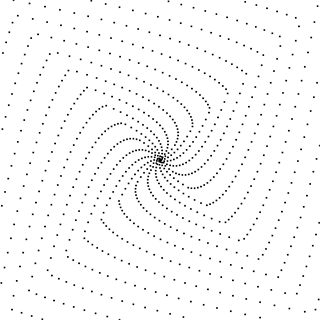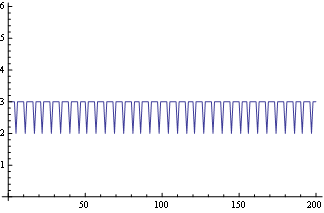Not very efficient, but you may find it useful for some experiments. I perused the code from the link you provided (kuba's), although there are better alternatives in the answers.
ClearAll[spiral, genTri, mp];
spiral[n_?OddQ] := Nest[
With[{d = Length@#, l = #[[-1, -1]]},
Composition[
Insert[#, l + 3 d + 2 + Range[d + 2], -1] &,
Insert[#\[Transpose], l + 2 d + 1 + Range[d + 1], 1]\[Transpose] &,
Insert[#, l + d + Range[d + 1, 1, -1], 1] &,
Insert[#\[Transpose], l + Range[d, 1, -1], -1]\[Transpose] &
][#]] &,
{{1}},
(n - 1)/2];
genTri[n_] := genTri[n] = IntegerQ[(-1 + Sqrt[1 + 8 #])/2] & /@ Range@n
mp[n_] := mp[n] = Image[Unitize[spiral[n] /.
Thread[Flatten@Position[genTri[n^2], True] -> 0]]]
Erosion[mp[601], 1]

There they are, your 17 arms
Erosion[mp[1001], 1]

For the "stability" of the number of arms a reasonable condition (rule of dumb thumb) is that the density of triangular numbers remain almost constant in each "layer" of the spiral, so you are not "creating" or destroying arms. And that is what effectively seems to happen:
r[n_] := Range[(2 n + 1)^2 + 1, (2 n + 3)^2]
f[n_] := Count[IntegerQ[(-1 + Sqrt[1 + 8 #])/2] & /@ r[n], True]
ListLinePlot[f /@ Range[200]]

The maths are left as an exercise :)
